In the modern market, there is a concept opposite to demand - this is supply. Under this term, experts understand the willingness of the seller to immediately sell their goods. The suppliers of products on the market are mainly its manufacturers. Their activities in the formation of prices and the sale of goods are determined by certain goals, the main of which is to maximize profits. The main function of the offer price is to ensure their achievement.
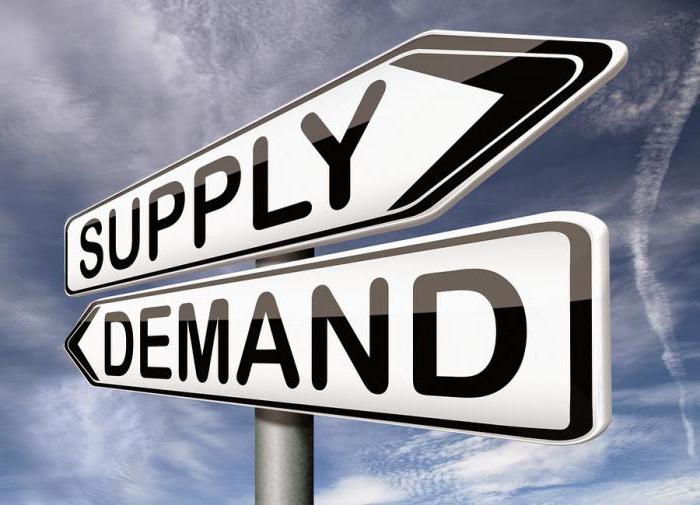
The essence of the proposal
Each commodity producer seeks to produce goods, the need for which the society is experiencing at the moment, that is, is based on consumer demand. Thus, all manufacturers on the market contribute to the satisfaction of public needs, forming the so-called offer. This is the opportunity and desire of the seller to put on the market a certain amount of goods at a given time. Such an opportunity is limited by the volume of production resources, therefore it is unable to satisfy the needs of the whole society at once.
The volume of the offer is determined volume of production but not equal to him. The difference between these values is explained by the internal consumption of products, losses during storage and transportation, etc.
Law of supply
The quantity of goods delivered to the market and its value are combined by a direct or positive relationship. The wording of this dependence is as follows: with equal market characteristics, an increase in the purchase price of a product contributes to an increase in supply, as well as its decrease causes a decrease in production volumes. This specific dependence is the main market law.
Actually, the effect of such a law can be depicted in three ways: graphical, analytical or tabular.
Consider the first option. Putting aside the conditional supply values on the horizontal axis and prices on the vertical axis and connecting them, we see that the resulting line has a positive slope. Simply put, when prices rise, the number of goods on the market increases, and vice versa. This chart serves as direct evidence of the above-stated market law defined by such a concept as the supply function.
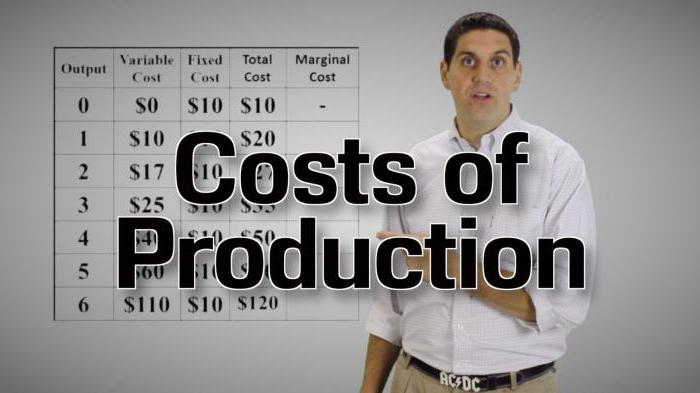
Determinants of Supply
The main factors capable of regulating the supply are the following non-price determinants:
- The price of resources needed for production. The more expensive the raw materials used, the greater the cost of production and, consequently, less profit and the desire of the manufacturer to produce this product. Thus, the supply function and its volume directly depend on the prices of factors of production (their increase leads to a decrease in its volume and, as a result, to a decrease in supply).
- Level of technology. Using the latest production technologies, as a rule, helps to reduce costs and is accompanied by an increase in the volume of goods offered.
- The goals of the company. If the main task of the enterprise is to make a profit, then its activity is aimed at increasing the pace of production. If the goal is, for example, its environmental friendliness, production capacity drops.
- Taxes and subsidies. Raising taxes leads to higher costs, and government subsidies, on the contrary, stimulate producers to increase supply.
- Change in prices for other goods. For example, a change in oil prices (in particular, an increase) contributes to a change in the cost of charcoal, in this case, upward.
- Expectations of manufacturers.Constant monitoring of the market sometimes affects the behavior of producers, for example, expected inflation helps to reduce production. Similarly, the planned price increase affects the change in supply, only in the opposite direction.
- The number of producers of homogeneous goods can also be attributed to factors influencing the supply. The more of them, the correspondingly higher the volume of goods offered in this market.

Offer function
This function is the dependence of the volume of goods delivered to the market on the factors that determine it. In a broad sense, all types of supply functions are to organize direct interaction between the production of goods and their consumption, as well as their purchase and sale.
The market demand for a product causes an increase in its production volumes and an improvement in quality, which leads to an increase in the total quantity of this product on the market.
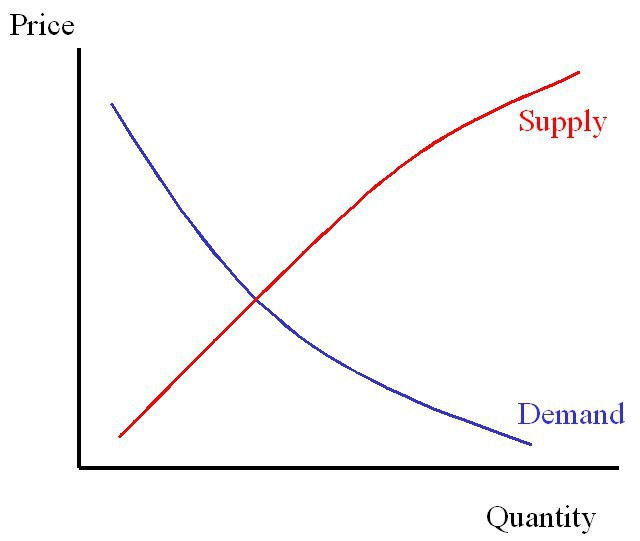
Supply curve
An offer curve (or an offer function) is a way of graphically depicting the quantity of goods offered in a given market for each price value with the constant influence of other factors on it. As a rule, this curve is increasing.
To build a graph, it is necessary to draw a line in the coordinate system, connecting the intersection points of the supply and demand lines.
The location and angle of the curve on the graph depend mainly on the size of production costs, since no enterprise will work if the profit from the sale of goods does not cover the cost of its production.
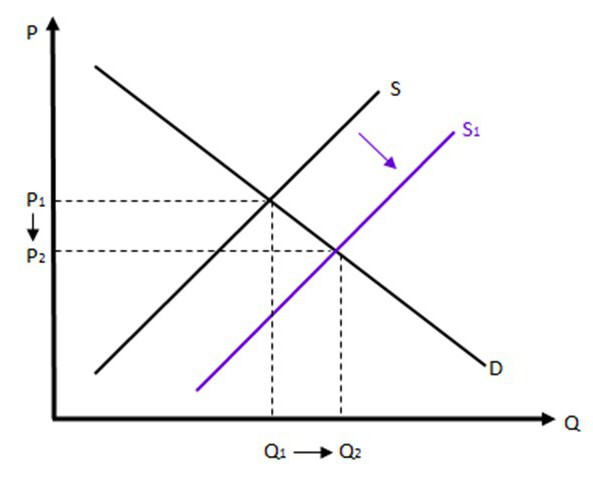
Supply curve shifts
An increase in supply helps to increase production volumes, and a decrease - to reduce them. This dependence is also reflected in the schedule of supply scheduling: in the first case, it shifts to the right and down, in the second - to the left and up.
The product offer function, as well as its curve, involves the use of two different terms, such as the "value of the offer" and directly the "offer". The first term is used when it comes to changes in the volume of goods supplied to the market due to fluctuations in their prices. If the change in production is caused by other factors, use the second term.
Also, a shift in the supply curve occurs when the sum of production costs varies: when it grows, the line shifts up by the amount of the difference, and vice versa - when it decreases.
Similar metamorphoses will be noted on the chart in case of raising / lowering taxes, due to their direct relationship to production costs.
The interaction of supply and demand
The retail price of a product on the market, as well as the volume of its production and sales, is determined by the interaction of supply and demand. It is this interaction that determines the functions of supply and demand.
If the price of a product falls below average, the market responds by increasing consumer demand. Manufacturers, in turn, reduce the output of this product, since its production has become less profitable. Thus, buyers are willing to buy a product, but manufacturers are not able to satisfy their growing need for it.
The reverse actions occur when prices rise: manufacturers want to sell as much expensive goods as possible on the shelves, but buyers do not want to buy them at such a high price.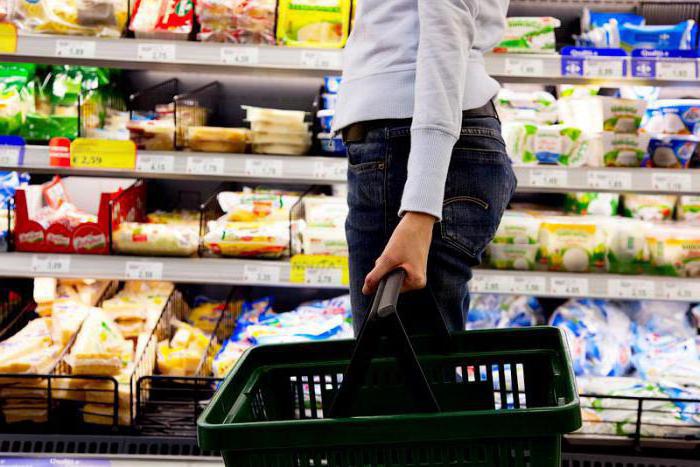
Equilibrium price
Equilibrium is the price at which the quantity of goods produced fully satisfies the consumer demand for it, that is, the value of demand is equal to the value of supply. Such a volume of production is in equilibrium for a given market.
If the current price of the goods differs from the above, the activities of sellers and buyers contribute to its achievement.This is explained by the fact that only such a cost of goods ensures the satisfaction of the current needs of society (and this, as we have already noted, the main function of the proposal) and the maintenance of an optimal level of production costs.
